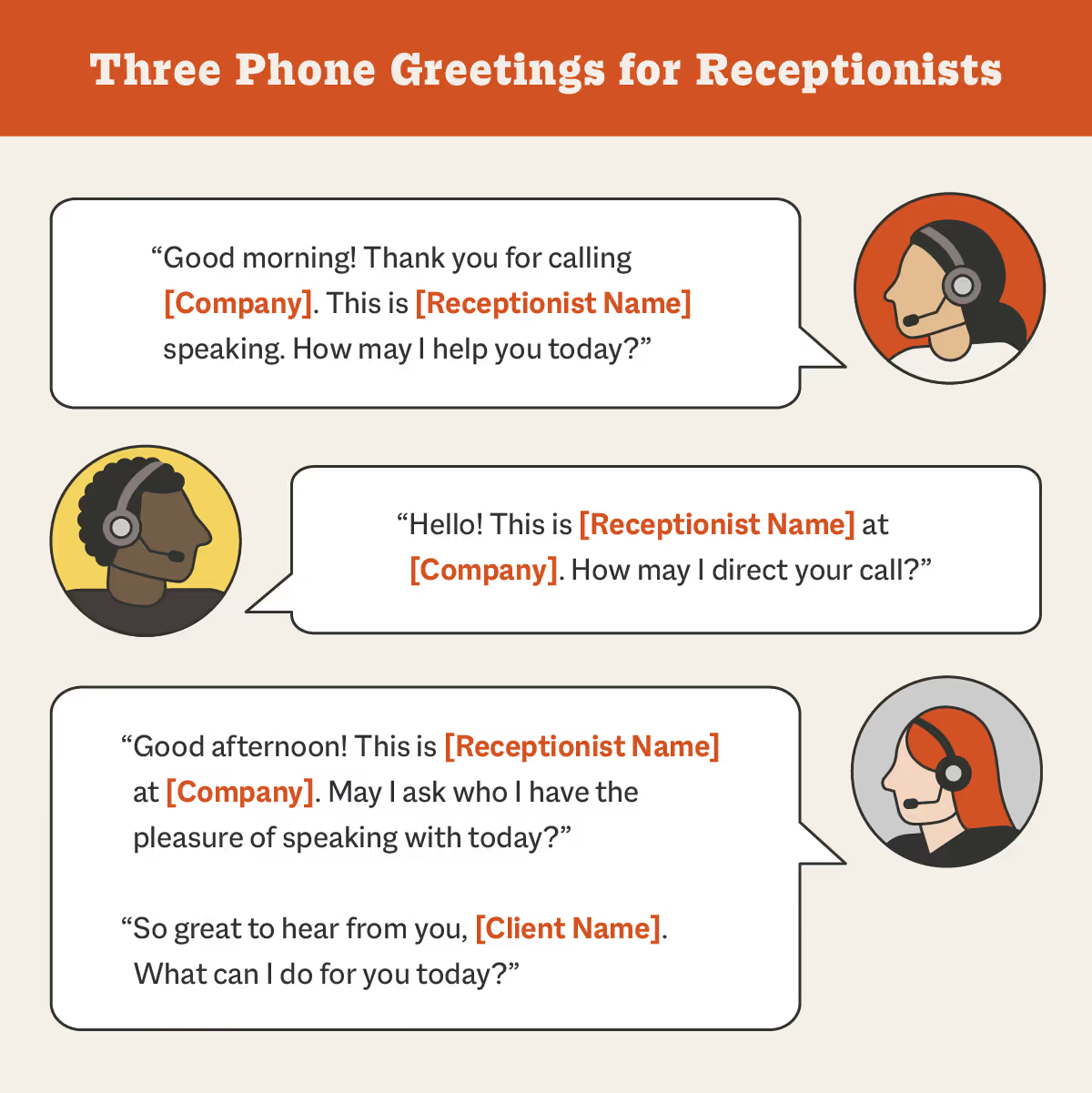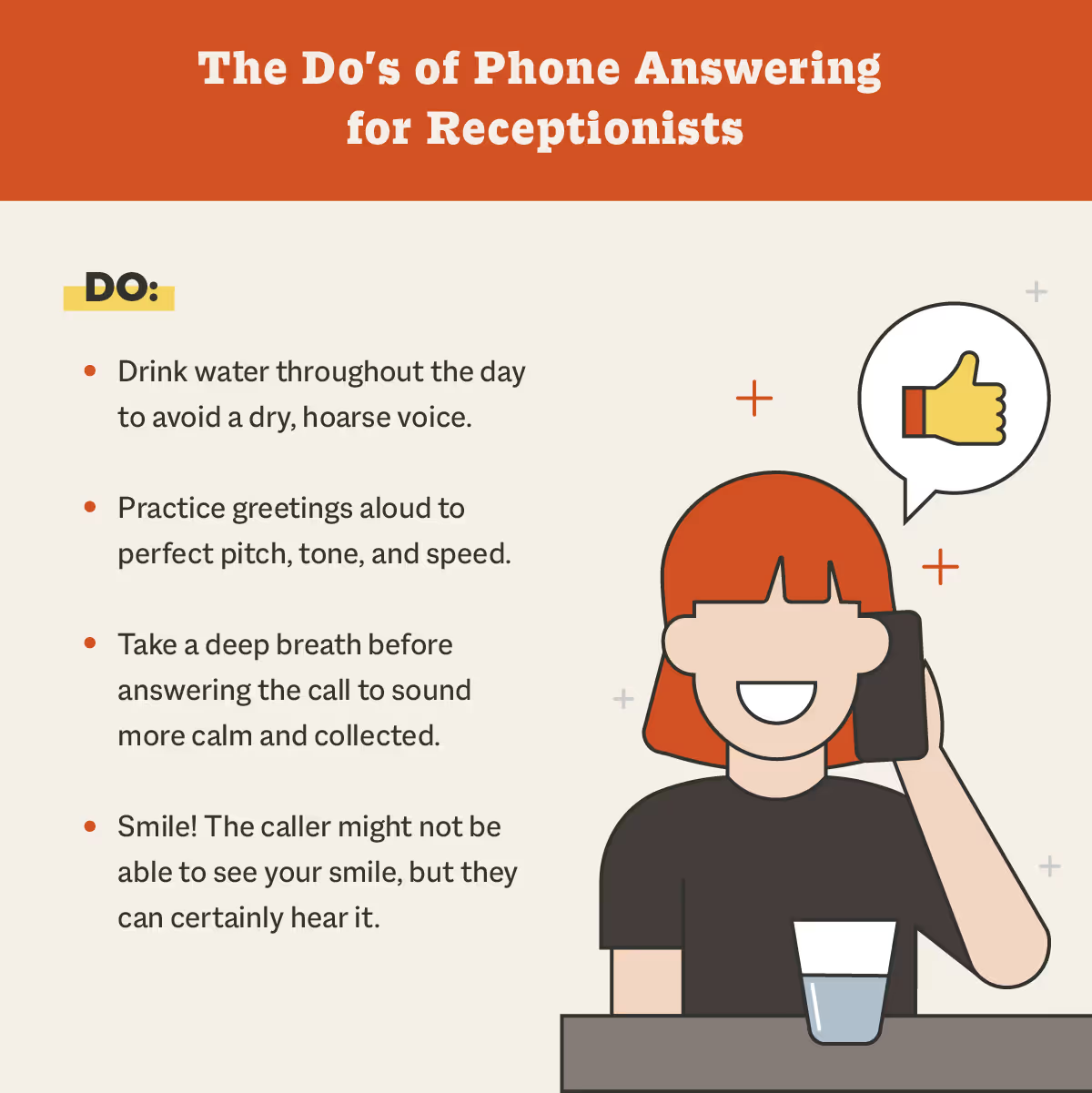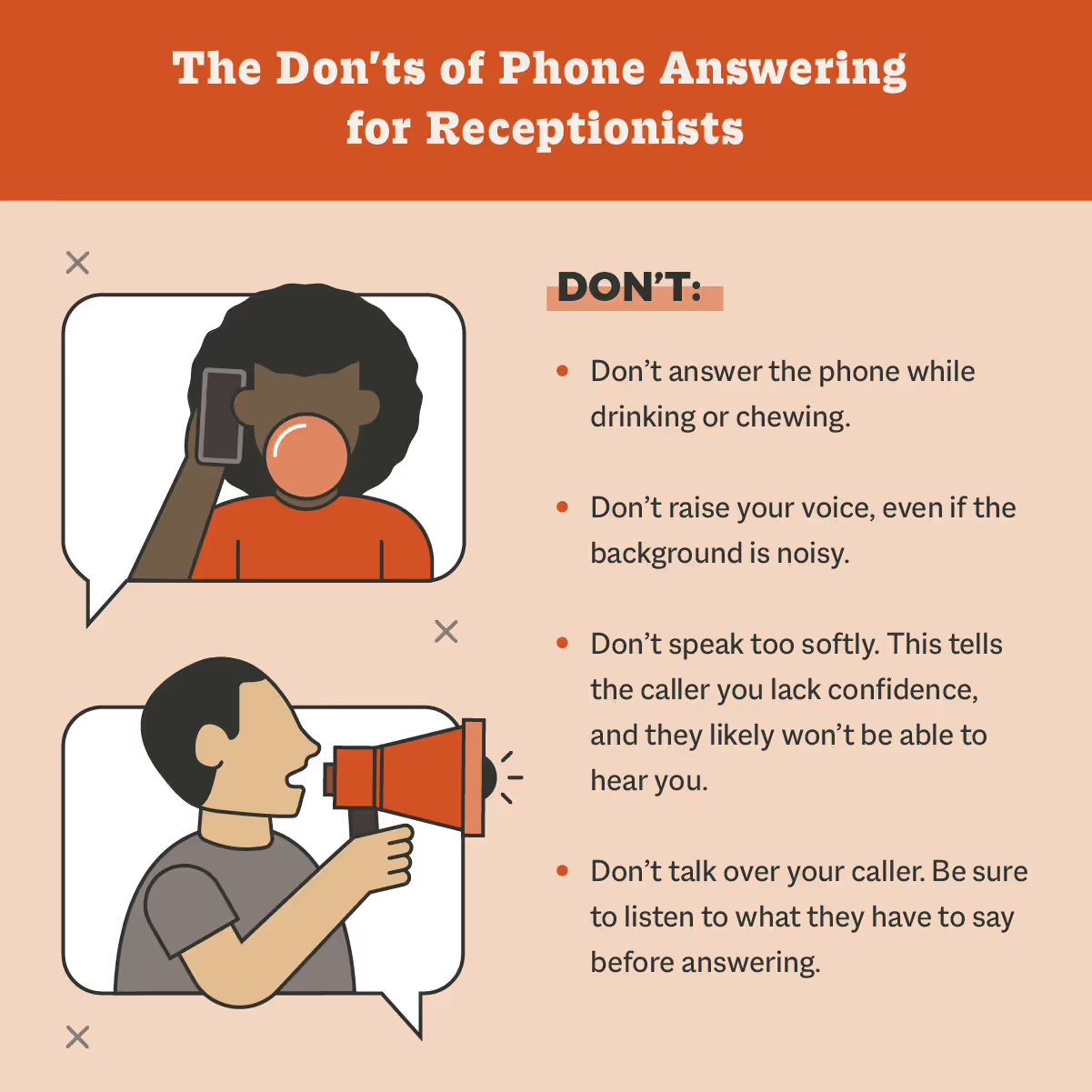10 Phone Answering Tips Every Business Owner Should Know
10 Phone Answering Tips Every Business Owner Should Know

Have you ever gotten off a call with a big potential client and thought, “Did I just lose that sale because of my dog barking in the background? Did I explain our services clearly? Was I friendly enough?”
You’re not alone. A high-pressure job that involves answering phones in either sales or customer support can make even a seasoned agent or receptionist second-guess themselves from time to time.
Some business owners opt out of in-house receptionists entirely, leaving the time-intensive inbound and outbound call management to companies like Smith.ai, which offers 24/7 phone answering with professional live agents.
If you’ve found yourself second-guessing a phone call with a new prospect or want to learn more about what a service like Smith.ai could do for you, read through these 10 tips for phone answering all business owners should know.
1. Find a quiet environment
During peak business hours, an office can get loud with customers walking through the door, deliveries — you name it. Of course, those are the times your phones are likely to be the busiest, too, but you don’t want your phone conversations overwhelmed with background noise.
A loud environment can make it difficult for callers to hear you, leading to frustration and a poor impression.
Find a quiet, separate space for your reception area, away from where business services occur. This might be easier said than done for some businesses. For example, a law office likely already has private offices for lawyers to meet with clients confidentially, whereas a hair salon is typically an open space.
If you have an open floor plan, try to create some physical distance between reception and the workers’ stations. It might also be worthwhile to put a barrier for sound to bounce off, like a closed-back shelving unit. This barrier will lessen the background noise for the receptionists answering calls.
2. Be prompt
Some patient callers might stick around for as many rings as it takes for you to answer. Others simply won’t and might not try back later if they find an alternative service provider. Seven out of 10 people hang up after the fifth or sixth ring, so it shouldn’t take more than three or four rings before you take the call.
On the other hand, answering on the first ring can startle some callers.
If your business doesn’t have a receptionist operating phones all day, you’ll want to find another solution for answering calls promptly. For example, you could post a few different phones around the office or look into a call answering service.
3. Identify yourself and your business
The first thing you should do upon picking up the phone is identify who is answering the call — the business they’ve reached and the person they’re speaking to. Your name is important to provide so if they need to call back, they will know who to ask for.
Keep greetings short and sweet, as extended greetings can sound scripted and stuffy. However, it’s not a bad idea to have some common receptionist greeting templates for your team to use when needed, such as training new staff or outsourced service providers.
A good greeting might look something like this: “Good morning! Thank you for calling [Company Name]. This is [Receptionist Name] speaking. How may I help you today?”

4. Enunciate your words
Knowing how to communicate over the phone is just as important as knowing what to say. When answering phones in the customer support or sales fields, properly enunciate your words. Speak at a slower pace and project your voice without shouting.
Be cognizant if you have what most would consider an accent when you speak. Your caller might not be calling from the same region or might be unfamiliar with your region’s dialect.
5. Use controlled language
When on a phone call with a client or prospect, choose your words carefully. Use professional language, meaning no slang, casual phrases, or profanity. Be sure to use “please” and “thank you” as they fit.
Being cognizant of the words you use also refers to proactive alternative phrasing. For example, instead of saying, “I don’t know,” try “Let’s find out.”
6. Train your voice
Since callers cannot see you through the phone, your voice can influence their impression of the business and you.
A “work voice” or “phone voice” comes through with training. Follow these tips to improve your voice when answering phones:
- Stay hydrated: Throughout the day, sip on water. Avoid drinking while on a call if possible.
- Smile when you talk: It will come through.
- Practice your pitch: A monotone voice can be difficult to engage with as a caller. However, you also want to be aware of the changes in your pitch in particular phrases or words. The difference in pitch change shouldn’t be so drastic that it alarms callers.
- Listen to others: Find some examples of good, professional speakers and mimic what you like.
- Project your voice: A strong voice portrays confidence and trust.


7. Accurately relay messages
It’s crucial to relay accurate information to new callers and existing clients alike. While it’s likely unintentional, inaccurate details might frustrate callers and turn leads from warm to cold. For example, even something as simple as providing a wrong email address or misspelling their name can cause a new lead to be lost.
Try repeating details back to the caller before the call ends to confirm accuracy. This is especially important regarding personally identifiable information (PII), like names, addresses, birth dates, and email addresses. It might help to use the phonetic alphabet to ensure accuracy.
Before transferring the call to a different department, be sure to relay the client’s information and reason for calling to the next recipient, as 33% of customers get frustrated when repeating themselves to multiple support reps.
8. Place them on a brief hold
For those times when you’re explaining a process, issue, etc., don’t be afraid to place callers on a brief hold to double-check the details and avoid relaying inaccurate information.
You might need to place callers on hold if:
- You’re transferring a call and need to check if the other person is available before the transfer occurs
- You’re unsure of the answer to their question and need to discuss it with someone else
- A customer or client entered the office, and you need to let them know you will be with them momentarily
It’s good practice to ask callers if you can place them on hold before doing so. For example, avoid saying, “One moment,”and then leaving them with hold music. This can confuse callers, or even annoy them.
If you’re able to estimate how long you’ll put them on hold, that often results in an even better caller experience. Remember: It’s always better to overestimate; avoid saying you’ll be back in “just one minute” when it’s safer to say “a few minutes.”
Be sure to come back to the line briefly to update the individual if the hold is taking longer than anticipated. Nearly 60% of callers feel that long holds are the most frustrating aspects of customer support experiences. It’s the receptionist’s job to ensure their hold experience is as pain-free as possible.
9. Avoid dead ends
Each phone call you receive will have a different goal. For example, one caller might want to set up their regular appointment, whereas another might be prospecting your business out of competitors. How you end the conversation will depend on the reason for the call.
End the conversation with potential next steps or a statement to keep the conversation going after you hang up. Here are a few examples:
- You could ask them on a scale of one to 10 how ready they feel to move forward with the purchase or sale.
- You could let them know you’ll send a follow-up email with details, next steps, or whatever information is appropriate from the call.
- You could ask them if it’s alright to schedule a follow-up call next week unless they reach out sooner.

10. Hire a professional
After reading our guide, if you’ve determined you don’t have the time or staff to implement these phone answering tips, try outsourcing your phone answering to virtual receptionists from a company like Smith.ai.
A highly efficient phone answering strategy is vital for garnering solid leads and growing your business, but it requires time and effort that you, as a business owner, don’t always have.
An answering service is an option for efficient and professional phone calls.
Smith.ai offers:
- Live virtual receptionists
- 24/7/365 assistance
- Ability to handle either all incoming calls or overflow only
- Lead qualification and client intake with a CRM integration
- Payment collection that works with your current credit card processing system
- Appointment-booking phone calls and call-back scheduling
- Free spam and sales call blocking
- Outbound calls for client status updates, appointment reminders, and web-form lead follow-ups
Remember, a large portion of sales and client service is conducted over the phone for most businesses. To further strengthen your team’s phone answering skills, check out this list of phone etiquette training courses. Or, to learn more about how Smith.ai can help improve your phone answering strategy, book a free consultation or contact us.
Take the faster path to growth. Get Smith.ai today.
Key Areas to Explore
Technical Implementation Terms
Voice user interface (VUl) design
Speech recognition integration
Text-to-speech optimization
API connectivity and webhooks
Real-time data synchronization

Your submission has been received!














.svg)



